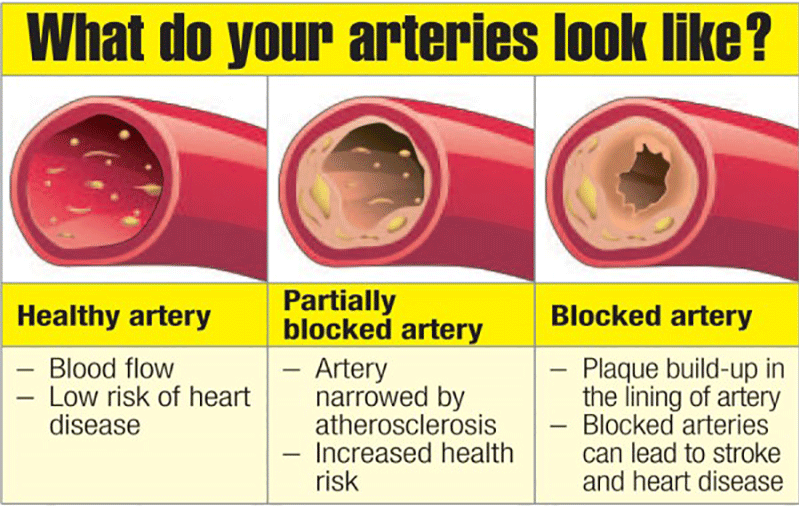Diseases of the cardiovascular system
- romisfg66
- Mar 5, 2017
- 4 min read
There are five main diseases of the carduivascular system:

Anemia
The condition in which your blood has a lower than normal number of red blood cells, it can also occur if your red blood cells don't have enough hemoglobin (reason for blood to be red and an iron-rich protein which helps red blood cells carry oxygen in the cardiovascular system), due to the lack of certain vitamins, minerals, and nutrients to make enough red blood cells, like Iron, vitamin B12, and folic acid. In other words, when a person has anemia they don’t get enough oxygen to their body, you may be asymptomatic or symptomatic depending on the level of development of the disease, if the anemia is mild or if the problem develops slowly you would be asymptomatic. First symptoms of anemia are feeling weak or tired more often than usual, or with exercise, headaches or problems concentrating or thinking.
Severe/long-lasting anemia can damage your heart, brain, and other organs in your body. Very severe anemia may even cause death. Tests and diagnosis are based on physical examination performed by the doctor finding low blood pressure, especially when you stand up or pale skin. Blood test are based on blood levels of iron, vitamin B12, folic acid, and other vitamins and minerals. Treatment should be directed to the main cause of disease including blood transfusions or supplements of iron, vitamin B12, folic acid, or other vitamins and minerals.

Artery Clogging
Atherosclerosis, being its more formal name, is the build-up of fibrous and fatty material (like cholesterol) inside the arteries. Such "build-ups" are known as plaques which have weak membranes. This condition can affect all the arteries. The most danger is when those plaques are in the arteries that supply blood to the brain, heart and legs, because if the membrane breaks, blood will clot around it and eventually block those vessels. In addition, this is an underlying condition that is known to cause coronary heart disease among other diseases. It causes chest pain and can lead to fatal conditions, unfortunately it is hard to detect because the plaque takes years to grow before is makes a significant effect.

High blood pressure or Hypertension
It is the condition in which the long-term force of the blood against the artery walls is so high that it may eventually cause health problems, such as a heart disease. High blood pressure generally develops over many years and some symptoms include headaches, shortness of breath or nosebleeds; however, these signs aren't specific and usually don't occur until high blood pressure has reached a severe stage. Finally, hypertension can lead to strokes, aneurysms (vessels weaken and bulge, if they break, they can be life-threatening) and metabolic syndrome (disorders within the metabolism) as well as can be treated with diuretics (which help the body to eliminate sodium and water), beta blockers (medications that open the blood vessels) and other “inhibitors” that block the formation of a chemical that narrows blood vessels. It is easy to d some people with Hypertension because blood pressure test is taken as a normal test when you to the doctor. The doctor will likely take two to three blood pressure readings each at three or more separate appointments before diagnosing high blood pressure. Treatment is based on changing lifestyle, can go a long way toward controlling high blood pressure.The doctor may recommend you eat a healthy diet with less salt, exercise regularly, quit smoking and maintain a healthy weight including some medication to lower the blood pressure.

Myocardial Infarction
It occurs when an artery leading to the heart is blocked and therefore the heart doesn’t have enough blood or oxygen. As a consequence, cells within the affected area die. Heart attacks are most commonly caused by blood clots, high blood pressure, high blood fats and, when being experienced, one might feel tightness or pressure in the center of the chest, overall pain, dizziness, irregular heartbeat, nausea and sweating. To avoid such condition, one should change their lifestyle and diet by reducing the consume of cholesterol. In addition, myocardial infarction can be treated with pain relievers, nitroglycerin (to dilate blood vessels) and anticoagulants (which make our blood less likely to form clots).

Leukaemia
It is a cancer that affects the blood, bone marrow, where the blood cells are made, and the lymphatic system. It leads to the over-production of abnormal white blood cells, leukemia is thought to occur when some blood cells acquire mutations in their DNA, and some symptoms include anaemia, weakness and shortness of breath, more frequent infections, purpura (small bruises on the skin), nosebleeds, fever and sweating. The tests and diagnosis of leukemia are based on Routine blood test, physical exam finding pale skin or swelling of lymph nodes, or bone marrow test. Types of leukemia are classified into stages, indicating the severity of the disease. The main ways of leukaemia treatment are chemotherapy, radiation therapy,use X-ray to attack leukemia cells and stop their growth, targeted therapy (drugs which specifically recognise and kill leukaemia cells), biological therapy(treatments which use the immune system to destroy leukaemia cells) and stem cell transplant (bone marrow transplant). Finally, although such disease is not directly inherited, some its risk factors include genetics, age, chemical exposure, etc.
References
University of Maryland Medical Center. (2016 ). Myocardial Infarction. [Web portal]. Retrieved from http://umm.edu/health/medical/altmed/condition/myocardial-infarction
Mayo Foundation for Medical Education and Research. (2016). Hypertension. [Web Portal]. Retrieved from http://www.mayoclinic.org/diseases-conditions/high-blood-pressure/basics/definition/con-20019580
Leukaemia Care. (2016). Leukaemia. [Web Portal]. Retrieved from http://www.leukaemiacare.org.uk/leukaemia
National Heart, Lung & Blood Institute. (2012). What is anemia? [Web Portal]. Retrieved from https://www.nhlbi.nih.gov/health/health-topics/topics/anemia
Bennett, M. (n.d.). All about blocked arteries. [Web portal]. Retrieved from https://www.bhf.org.uk/heart-matters-magazine/medical/blocked-arteries
Health line (n.d) Acute Myocardial Infarction [Web portal]. Retrieved from http://www.healthline.com/health/acute-myocardial-infarction#Overview1
The physicians Committee (2016) The Warning Signs of Clogged Arteries [Web portal]. Retrieved from http://www.pcrm.org/nbBlog/index.php/the-warning-signs-of-clogged-arteries

Comments